
Early African religion: Standing stones at Nabta Playa (modern Sudan), ca. 6000 BC
Early African religion – what was the first religion?
The earliest evidence we have for religious faith anywhere in the world is from Blombos Cave in South Africa, where people may have been using red ochre for funerals about 100,000 years ago.
More about Blombos Cave
All our Africa articles
Around 6000 BC, people put up standing stones in East Africa (modern Sudan). These stones may have marked the changing seasons. Maybe the standing stones at Nabta Playa showed people when to hold important religious ceremonies.
More about the standing stones
African religions in the Bronze Age
More about Egyptian religion
Lots more Egypt articles

The Bronze Age cemetery at Lake Turkana, in Kenya (3000 BC)
East Africa: South of Sudan, in Kenya, also around 3000 BC, people living around Lake Turkana built a large cemetery with mounds, stone circles, and large standing stones. We don’t know who their gods were, but they thought funerals and cemeteries were important.
West Africa: In West Africa, however, the Bantu people seem to have been more monotheistic. They thought of there being one god, sometimes a sky god or sun god and sometimes not.
More about monotheism
By around 1300 BC, we can see the first strains of an interest in monotheism emerging in Egypt, too, with Akhenaten. Did Akhenaten get the idea to worship only one god from West Africans? Nobody knows.
More about Akhenaten
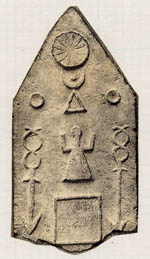
Early African religion: the Phoenician goddess Tanit
Phoenician, Greek, and Roman gods come to Africa
Polytheism triumphed when Akhenaten died, though, and survived through the conquest of North Africa by the Phoenicians who introduced their own gods to North Africa, like the goddess Tanit and the god Ba’al.
The god Baal
More about ancient Carthage
Who were the Phoenicians?
Tanit was a moon goddess – that’s why she has a crescent moon over her head on this carving. In North Africa, she was probably a mixture of the old Phoenician goddess Tanit and a local African moon goddess.
The goddess Tanit
More about the moon
Ba’al was Tanit’s husband: his name just means “Lord”. People sacrificed young sheep and goats, and maybe sometimes even their own children, to the god Ba’al.
The Greeks, and then the Romans, soon added their gods to the gods worshipped in North Africa.
More about Roman religion
North Africa under Roman rule
Christianity and African religion
Around 300 AD there was a second great change in African religious belief when many North and East Africans gradually followed the Roman Emperor’s lead in converting to the monotheistic faith of Christianity.
More about early Christianity
The great Christian theologian St. Augustine was from North Africa. By the 500s AD Christianity won over most of North Africa, including Egypt, and also the kingdom of Axum south of Egypt (modern Sudan, Eretria, and Ethiopia). The Christians of North Africa were split among the Donatists, the Catholics, and then the Vandal Arians.
Who was St. Augustine?
More about the Donatists
Who were the Arians?
Axum and Christianity

African religion: Mosque in a medieval seaport in East Africa (Masjid al-Qiblatayn, Somalia, 600s AD)
Bantu ghosts and ancestors
In this same time period, the Bantu were gradually expanding across southern Africa, bringing their faith with them. Bantu faith continued to de-emphasize polytheism, while having instead a firm belief in ghosts and their power over living people.
Who were the Bantu?
Some of these ghosts were your own dead parents or grandparents. Others might be the ghost of a dead king or hero, and these might be remembered for a long time, rather like Christian saints.
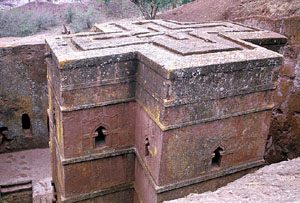
African religion: The rock-cut church of Lalibella from medieval Ethiopia, which stayed Christian
Islam and African religion
In the late 600s AD, another monotheistic faith, Islam, came to Africa, first across the Red Sea to Somalia and Eretria, then to Egypt.
More about Islam
After that, Islam spread rapidly across North Africa. A hundred years later, almost the entire population of North Africa had converted to Islam. Islam quickly spread across the Sahara Desert as well, so that many people who lived in the grasslands south of the Sahara became Muslims too.
Islamic North Africa
Islamic Timbuktu

African religion: Remains of the Great Mosque at Gedi, Kenya
All the way south to the great rain forests, there were many Muslims or people who followed at least some Muslim beliefs. And, thanks to Arab and Indian traders, the entire east coast of Africa became Muslim, as far south as Mozambique. Sudan also became mostly Muslim. So most of the people who lived in Africa were Muslims.
History of Sudan
History of Mozambique
But Christian and traditional faiths are still there
Even though many people converted to Islam, many other people didn’t. Ethiopia stayed Christian. People in medieval Ethiopia built big stone churches and wrote long books of Christian prayers and Bibles.
More about Ethiopian Christian churches

San Rock Art – people doing a sacred dance
South of the rain forests, in central and western Africa, Bantu religion remained dominant. And in the Kalahari desert, the San people kept up their own faith. It was very similar to the Bantu faith in its emphasis on ancestor ghosts.
More about the San
Did you find what you were looking for about early African religions? Do you have more questions? Let us know in the comments!
Learn by doing – A rock art project
More about the goddess Tanit
Bibliography and further reading about African religion:
Myths and Legends of Ancient Egypt, by Thomas James (1971)
Children of the Lamp (Akhenaten Adventure), by P. B. Kerr (2004)
Abiyoyo, by Pete Seeger (reprinted 1994)
A Coalition of Lions, by Elizabeth E. Wein (2003) – A novel about Christian Africa in the 500s AD- warning: this book is the second in a series!
African Religion, by Aloysius Muzzanganda Lugira, Paula R. Hartz (2004)
The Atlas of Islam: People, Daily Life and Traditions, by Neil Morris, Manuela Cappon, Gian Paulo Faleschini, Studio Stalio (2003)
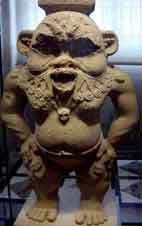



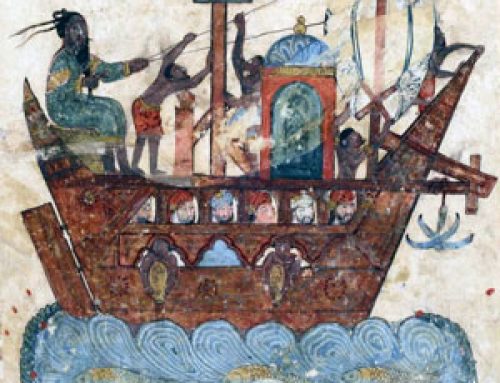
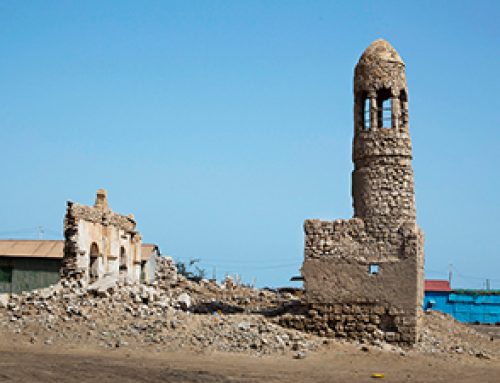
way do you call yourself Dr karen
Because I hold the degree of Doctor of Philosophy, so that’s my correct title. Or sometimes I go by Professor Carr.
Food in India
Were you looking for food in India? It’s here: https://quatr.us/india/indian-food-history-ancient.htm
yo karen
aye what were the clothing they wore
African clothing article here: https://quatr.us/history/african-clothing-history.htm and in the Middle Ages here: https://quatr.us/africa/iron-age-african-clothing.htm
I have this “life in the middle ages web quest” and when i searched up http://www.historyforkids.org/learn/medieval/clothing/index.htm (it was one of my web quest “links”), this showed up, do you have any idea why??? (this is really useful info, just not the info i need at the moment,)
(Sorry to bother you with “bad news” on a Friday.)
I’m so sorry, but there’s some problem with the links. While I track it down, you’re looking for this page: https://quatr.us/medieval/medieval-european-clothing.htm
This did not give me info about Greece it gave me info about Africans which I don’t need info about
Sorry! There’s a link that’s wrong somewhere and took you to the wrong place. All our Greece articles are here: https://quatr.us/ancient-greece-persian-wars-parthenon
im 12
Very informational!
Thank you I love getting comments like that! I’m glad we could help. If you have a teacher or librarian who would like to link to this site, we’d be very grateful, so other students could find it! Or, if you or your folks would like to sponsor our Patreon, it’s here: https://www.patreon.com/quatr_us. Every sponsored $1.00 gets the ads off an article so we can all enjoy reading without the distracting ads.
Helpful website.
Thanks! If there’s anyone at your school who can link to us (librarian? teacher?) we would super appreciate that!
I’m trying to get to the website for Rome, but I end up here! WHY?!
Sorry about that, Cal! There must be a busted link somewhere; I’ll track it down and fix it.
…i cant find what i need…
do u have more like this?
Sure: check out all our Africa articles here: https://quatr.us/africa-articles-stone-age-modern-africa and an article on Egyptian religion here: https://quatr.us/egypt/ancient-egyptian-religious-rituals.htm
this is cool.
wow it was a good article
hi karren sup
this sucks
jk
really good
Very Good Site
Very good website.
I would recommend this to my friends
Thanks, Neal! I really appreciate that! If you recommend this site to your teacher, and they link to us, that will be even more helpful (both to us and to future students looking for a good site)!
This history is not enough,iam concern of how Africans worshiped before Christianity, Islam and other form of religion…i also want to know why are African poeple so focused on another nations Relious people instead of African ones that existed before any other religions. And if Africans would know their origional history of their religion, as Africans we are going to be able to identify false prophets.and Christianity is a academical religion not spiritual.
I’m sorry it wasn’t enough of what you were looking for. I wanted to make the point that the vast majority of the people living in Africa have chosen to follow Christianity or Islam for the last thousand years – nearly as long as people in Europe or Asia have followed those religions. Christianity and Islam are not just the religions of the colonizers in Africa.
Also, Africa is a continent, not a nation. Christianity and Islam are not the religions of any one nation either.
islam came to africa through eritrea not somalia, because the king was axumite king who welcomed the the fleeing muslims , and somal wasnt part of axum kingdom.
It’s probably about the same time; there were mosques in Somalia by the 650s AD.
so this website did not give me the info i really needed if there are more things on west African religion could you tell me? that would be great. BTW my name is Gabby
Hi Gabby,
What info did you really need? Maybe I can answer your questions.
hi im doing a webquest
Hey! So am I!! :D
hi my name is debrah
hey im billy and i dont understand
Hi Billy, thanks for stopping by! I’d be happy to answer your questions – what were you trying to find out?
i like turtles
Did you think the African masks were turtles? Those are people’s faces, not turtles, sorry.
this site gave me a virus
I think that is unlikely, but if you send me the details I’ll try to help.
hi
i love this
yeeeaaaaaaa
This is a amazing website
nice web sit five star
Thanks!
HORRIBLE JUST BAD
Wow, sorry you don’t like it. Was there anything in particular?
Hey This is very helpfull
were does it say what i would be wearing during the middle ages
Are you looking for what you would wear in Africa in the Middle Ages, or in Europe?
In Africa: https://quatr.us/history/ancient-africa-projects-games-food-costumes-activities.htm
but also check this one out: https://quatr.us/africa/medieval-african-clothing-cotton.htm
hi my name is Grace I am in grade 4 I am learning about this WEBBSITE. I am 9 years old
Thanks for visiting, Grace!
Thank you! it was interesting and really helpful! You should do more of these more often.
We have thousands of articles, Azaria! Here’s the index of Africa articles: https://quatr.us/africa-articles-stone-age-modern-africa . Check them out!
Good resource and well written. I have a related resource page about african mythology https://www.themystica.com/african-mythology/
Thanks, John! I hope you’ll soon add some info about who you are and why you started this website, with maybe your sources, so students can know they can trust your information.
Usefullll Lov it
Thanks!
Indeed, very cool! Karen, i was thinking how to frame my question to you which this article has sparked in me… but somehow unable to.. so i have a disjointed communique… hope you figure out what i have in…
Between Monotheism and Polytheism, can we figure out which ancient tribes/peoples incline towards which …eism? and whether monotheism was the original religion for all mankind at one moment in time all over the world at the same time and then branched out or vice versa…
I hope i have not confused you?
Sajeda
Hi Sajeda,
I think your question is pretty clear! That’s a good question, too. The earliest people lived in small, scattered groups, so they weren’t all united in doing any one thing. There wasn’t ever one united religion that everyone had, that broke apart later. It’s more the other way around. At first, people worshipped their own local gods. Often these were whatever seemed mysterious and powerful near their homes, like a local volcanic mountain, a big river, the ocean, or a big tree or oddly shaped stone. When people started to form bigger communities, they found out that other people also had a god of the ocean, for example, and often they merged their gods together. Then when the first big empires formed – the Persian Empire, the Roman Empire, Zhou Dynasty China – people had one supreme leader on earth (the Emperor) and they started to think of having the same kind of leadership in Heaven too: one god. Most of the monotheistic religions start around the same time as the big empires.
great website- provided various information including what I needed about the ancient west african religions. I had some research to do and this helped a lot. Thank you Karen
You’re welcome! I’m glad you found what you were looking for.
This is really usefull and I’m from Canada
COOOOOOL
Thank you Karen Carr,
My name is Dennis
All of this is very informative and brings up a good study.
Can you help me to understand a little about the Apocrypha and what it means to people who are Christian? I have very little understanding on this subject and what it means.
That’s a good question, Dennis! Early Christians did a lot of writing, all around the Mediterranean. Some were better writers than others, and some had better ideas than others. When later Christians decided to collect all this writing into the New Testament, they had to decide what to put in and what to leave out. The Apocrypha are some of the things they decided to leave out. Officially, they’re not sacred texts to Christians, but some Christians are interested in them anyway.
There are also some Christian writings that Catholics consider to be Apocrypha, while Protestants include them. Orthodox Christians leave out even more. So it depends what kind of Christian you are.
Interested in knowing the God that Africans worship during the time of Religious wars in England, and how Africans or black people came to be Christians? In the total scheme of time and space, are we all really serving the same GOD?
A Curious Christian
Most people in Africa were Muslims at the time of the wars of religion in England, that is, in the 1500s and 1600s AD. Others followed traditional religions. People were only Christians in Ethiopia and as a minority Coptic faith in Egypt, and in places colonized by the Portuguese: Congo, Angola, and Mozambique, where many people had converted to Catholicism. In the late 1800s and 1900s, thousands of Protestant missionaries went from Europe and the United States to Africa and converted many more people to Christianity. Today, Africa is mostly split between Islam and Christianity.
This page keeps on coming up whenever I try to access: http://www.historyforkids.org/learn/medieval/clothing/index.htm
Why…
It’s the same page; we’ve just moved from one domain to another, because we’re not just for kids anymore.
this website is very helpful i love it :)
Thank you, Britney! It’s very kind of you to say so!
this is a helpful websit
Thanks!
thank you i like this websight
Wonderful!
wow this websites are cool, i got a 100 on a test. THANK YOU!!! ;-)
That’s great! Congratulations!
This was so helpful. I will spread this on to my friends and family, I hope you have a awesome day, just keep on doing whatever you are destined to do. i’m 11 years old. bye
I’m glad you found it helpful!
my teacher loved this article and it helped soo much!
Wonderful! I’m happy to hear it! If your teacher would put it on his or her class page that would help us reach more students!
help me i hate school!!!!1
I’m sorry you feel that way. I think mostly when people say they hate school, they mean that they hate this school or this class. Maybe you can find a way to change schools, or change to a different class, where you might get along better?
Thanks, Karen this is a great little article. It helped a lot.
Thank you, Jebidiah!
hi
That was great thank you!!
-Annabelle
You’re welcome, Annabelle!
are there what they played for games for this?
Sure! You want our article about early African games here: https://quatr.us/history/african-games-history.htm
This website is good
Thanks!
this website is lit
Thanks!
my name jeff
Hi Jeff!
help
Hi Robert, thanks for visiting! How can I help you? What were you trying to find out?
Hello Karen! I love this website and it gave me LOTS of information! I love it!
Wonderful! I’m glad we could help, Jessica!
Hi my name is anthony this website is cool
Thank you, Anthony! I’m happy to hear that we’re cool!
this make no sans
Sorry, what were you trying to find out? Maybe I can answer your question?
My name is Caeb. My favorite color is monochromatic and I eat rcks.
Hi Caeb, nice to meet you! Do you know this guy? http://theneverendingstory.wikia.com/wiki/Rock_Biter/Pyornkrachzark
That isn’t a color. It means containing or using one color
Pretty sure Caleb meant it as a joke, dude.
hi my name is jeff
hi this webbsite is cool and it is helpful
Thank you! I’ve always wanted to be cool!
Hi my name is Karen! Thanks for stopping by.